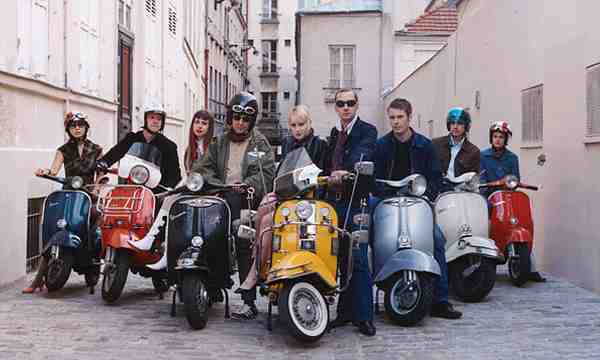
Describe the representation of youth in the two posters. What are the connotations of the two texts?
The colour of the text on both posters is the same represnting the colour of the British flag showing that they are proud of where they come from and also giving you the hiint that this is where the story is based and this is what the story will be based around. In both posters there is a big group of people as numbers are stronger and can easily single out people on there own, stronger in a pack. The top image has colour but the main colour is blue, blue signifies peace and tranquility but in this case it is using a contrast as there is a large goup of youths stood in front of it all stood staring straight at you therefore trying to show that they are the upper class and that they are in charge by using fear. The quality of the picture in the second image is not very good and it is quite blurry whereas in the top one it is very clear the fact that one has a colour image and the other one doesnt also gives a feeling that the second image is much older than the top one as photographical developments are much further ahead. the sign of used inside the Q of quadrophenia is the sign that represent the mod in the 60s, this could also be the reason for these colours being used in both images to represent that they are all mods. In both images there is one man is white jeans, different to the blue ones all the other men are wearing, this could be to make him look different from his other friends and show his authority by being the only one allowed to wear them so that everyone knows he is in charge.
60s Mods



Attitudes:
They had greater disposable income therefore they relished their leisure time,going to nightclubs,listening to music and collecting records. They hated the gruelling 9-5 however all still did it and demanded more fun and more freedom.
Beliefs:
They thought that there was more to life than the way their parents had lived and that now that the war was over they needed to rebel so that society would change and grow and so that boring 9-5 jobs did not have to be the norm forever.
How they were identified:
The mod lifestyle revolved around clothes,clubs, music and scooters. They dabbled in drugs regularly and spent little time at home as they would much rather be out with friends.
What brands identified them:
green parka jackets
Tailor made suits and mopeds
What music they listened to:
mod was about modern jazz (listened to by the modernists), but as we entered the 1960s, it was R&B, soul and Jamaican ska - the music of choice for the clubs of the day, augmented by the beat bands of the day who often re-interpreted the imported soul grooves, creating the beat group sound of the mid-60s.
Quotes:
Mod terms
Faces were top Mods who were seen as taste makers in the Mod movement, the first to start a new trend.Numbers were younger Mods. The term came from having t-shirts with numbers on. For a time The Who called themselves The High Numbers; the name was meant to appeal to the Mod market. Younger Mods were also called sixes and sevens because the t-shirts cost 7/6 from Woolworths.
Tickets could also mean the same as Numbers, or might have referred to people with no fashion sense. A First Class Ticket being the worst offender.
Mockers copied both Mods and Rockers, and mixed and matched from both.
Mids did the same, but by accident rather than design.
States were people who tried to be Mods, but could not get the look right. Alternatively this term was used to describe Rockers by Jimmy in Quadrophenia. It meant in a bit of a state.





